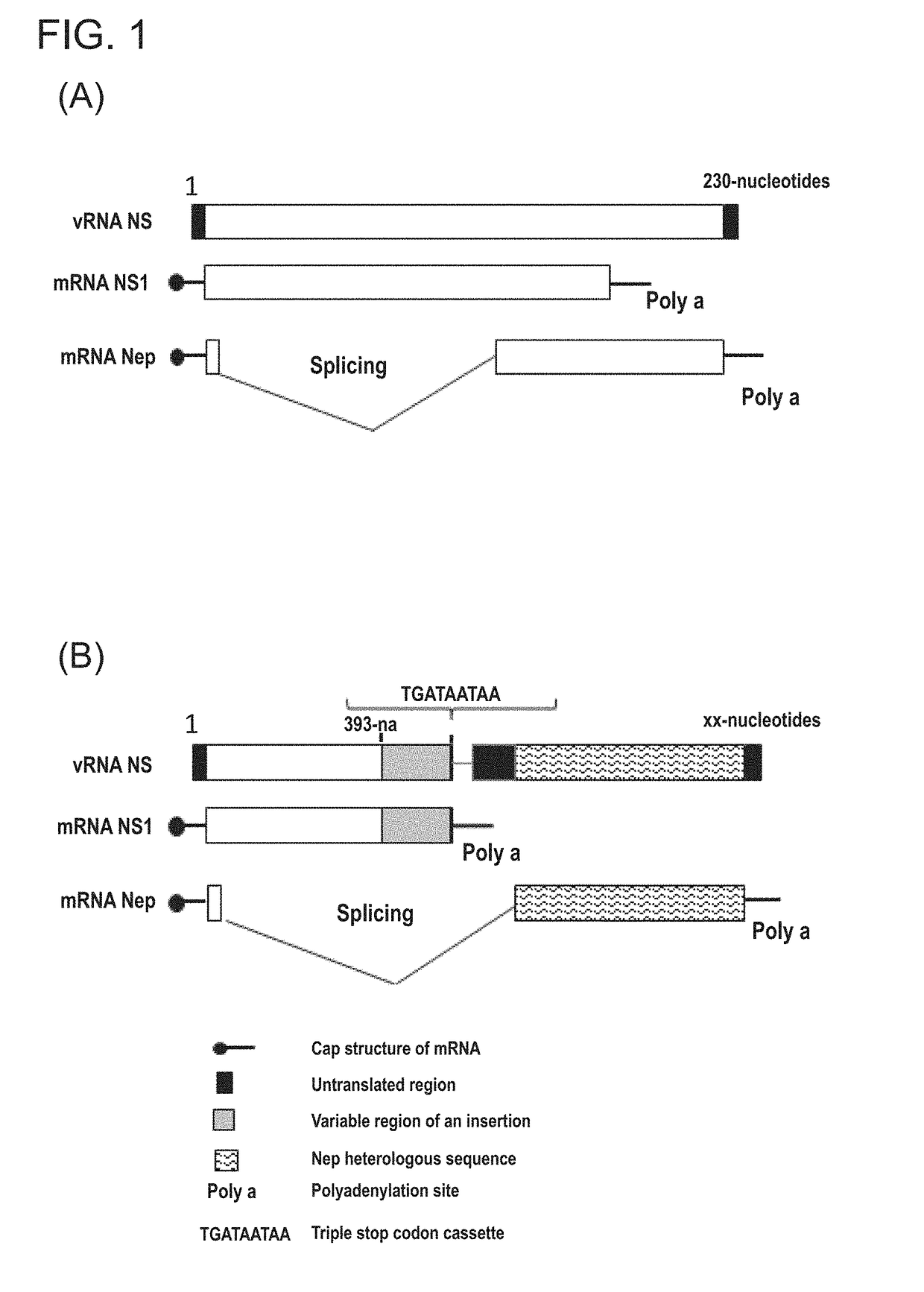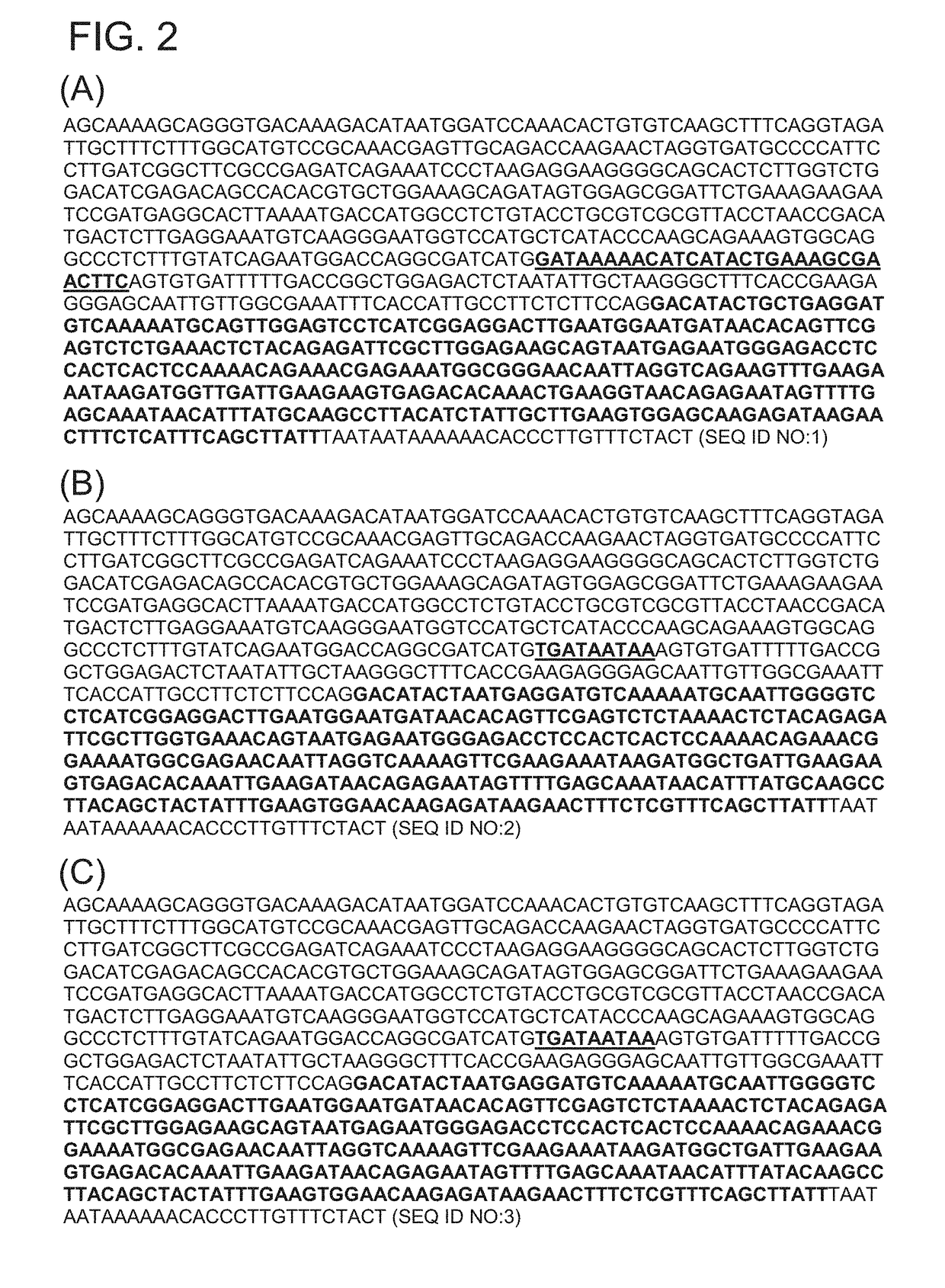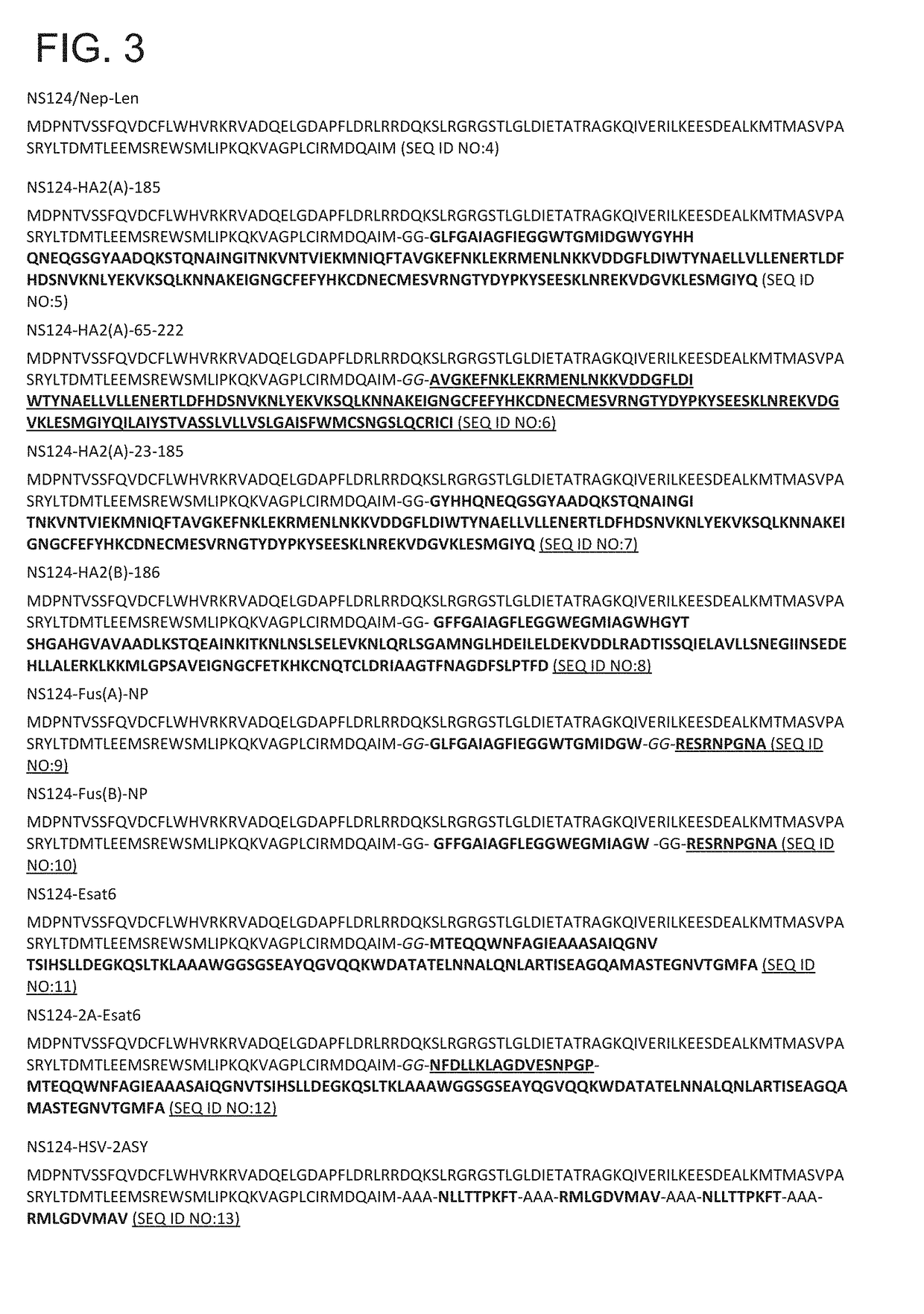Attenuated influenza vectors for the prevention and/or treatment of infectious diseases and for the treatment of oncological diseases
a technology of influenza and vectors, applied in the field of medicine and virology, can solve the problems of indirect losses caused by a decrease in productivity and corporate profits, the greatest damage to the health and economic well-being of the population, and the influenza infection is especially dangerous, so as to reduce the cost required, the effect of high growth potential and high degree of safety
- Summary
- Abstract
- Description
- Claims
- Application Information
AI Technical Summary
Benefits of technology
Problems solved by technology
Method used
Image
Examples
example 1
[0138]Production of Influenza Vectors with a Modified NS Genomic Fragment
[0139]Recombinant viruses were assembled in several steps. At the first step, complementary DNA (cDNA) copies of all eight genomic fragments of influenza virus A / PR / 8 / 34 (H1N1) were synthetically produced by using data from a genetic bank: pHbank-PR8-HA (Genbank accession number: EF467821.1), pHW-PR8-NA (Genbank accession number: AF389120.1), pHW-PR8-PB2 (Genbank accession number: AB671295), pHW-PR8-PB1 (Genbank accession number: CY033583), pHW-PR8-PA (Genbank accession number: AF389117), pHW-PR8-NP (Genbank accession number: AF389119), pHW-PR8-M (Genbank accession number: AF389121), pHW-PR8-NS (Genbank accession number: J02150.1)). At the second step, the synthesized sequences were cloned into a bidirectional plasmid pHW2000-based vector (Hoffmann E, Neumann G, Kawaoka Y, Hobom G, Webster R G, A DNA from eight plasmids, Proc Natl Acad Sci USA. 2000; 97 (11): 6108-13). This plasmid vector, due to the presence o...
example 2
[0146]Determination of Temperature-Sensitivity Phenotype and Attenuation of Heterologous Nep-Carrying Recombinant Viruses
[0147]The temperature sensitivity of viruses was determined by comparative titration of the infectious activity of viruses on Vero cells at an optimal temperature of 34° C. and an elevated temperature of 39° C., in 96-well plates. The virus titers were counted by the Reed-Muench method after incubation for 96 hours, taking into account the development of the cytopathic effect in the plate wells (Reed, L J, Muench, H. (1938). “The A simple method of estimating fifty percent endpoints.” The American Journal of Hygiene 27: 493-497.). FIG. 4A shows virus titers at these temperatures, expressed in 50% tissue cytopathic doses (Log TCD50 / ml). Both viruses carrying heterologous Nep from A / Singapore / 1 / 57 (H2N2) or A / Leningrad / 134 / 47 / 57 (H2N2) strains surprisingly showed a significant decrease of more than 4 log in infectious titers at 39° C., compared with the optimal temp...
example 3
[0149]Determination of the ts Phenotype and Attenuation of Vectors Carrying a Chimeric NS Genomic Fragment and Various Insertions in the Reading Frame of an NS1 Protein
[0150]A wide set of vectors encoding insertions of different nature was produced to determine the effect of insertions of foreign sequences into the reading frame of an NS1 protein on the ts phenotype of viruses comprising a chimeric Nep gene. The viruses with insertions shown in FIG. 3 were studied. The ts-phenotype was studied by titration of the virus infectious activity at temperatures of 34 and 39° C. in 10-day-old chicken embryos (ChE), by determining the haemagglutinating activity of allantoic fluids collected 48 hours after incubation. The titer was calculated by the Reed-Muench method and expressed in log of 50% embryonic infectious doses (log EID50 / ml). As can be seen from the data presented in Table 2, all vectors, contrary to the wild-type A / PR / 8 / 34 (H1N1) virus, had a significantly reduced reproduction ab...
PUM
| Property | Measurement | Unit |
|---|---|---|
| Fraction | aaaaa | aaaaa |
| Current | aaaaa | aaaaa |
| Volume | aaaaa | aaaaa |
Abstract
Description
Claims
Application Information
 Login to view more
Login to view more - R&D Engineer
- R&D Manager
- IP Professional
- Industry Leading Data Capabilities
- Powerful AI technology
- Patent DNA Extraction
Browse by: Latest US Patents, China's latest patents, Technical Efficacy Thesaurus, Application Domain, Technology Topic.
© 2024 PatSnap. All rights reserved.Legal|Privacy policy|Modern Slavery Act Transparency Statement|Sitemap



